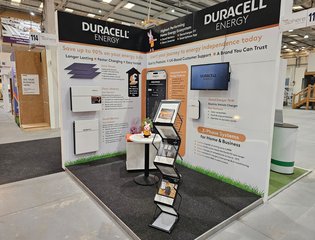How Does Home Battery Storage Work?
1 August 2024

Storing energy in your home brings incredible benefits, but how does it work?
Fully Charged
Energy storage works by pulling power from solar panels or the National Grid into the home battery systems, which then charges the battery. Once this energy is needed in the home, the battery discharges the energy to power the home.
The battery can be charged up from either source. Many people use home energy storage batteries with solar panels as they allow you to charge your battery during daylight hours and discharge it when you get home in the evening. People also use energy storage to buy cheaper energy off the National Grid during off-peak hours and then use this energy during the peak hours, generally the evening, to power their homes.
How Does Energy Battery Storage Work?
Energy can be used to charge up the energy storage battery, and then the battery is discharged as the energy is used to power a home. The energy can be sourced from renewable sources such as solar panels or directly from the grid and stored until needed. If you are storing energy produced by solar panels, then the energy produced is DC, which needs to run through an inverter to turn into AC, the power used in your house. There are different types of batteries, but the principles remain the same.
Lithium-ion Batteries
Lithium-ion batteries use the latest battery technology. They have better-charging space, meaning they take up less room than older-style batteries. They also have a long lifespan, making them an excellent home energy storage system choice.
Lead Acid Batteries
Lead-acid batteries have a shorter life span than their lithium-ion counterparts. They need a larger volume of space to store the same amount of power as lithium-ion batteries and maintenance throughout their life.
Lead Carbon Batteries
Lead carbon batteries are similar to lead acid batteries; however, they add carbon, which makes them have less internal resistance and less self-discharge when the battery is not in use. However, they still share the same problems as lead acid batteries.
Flow Batteries
The difference between conventional and flow batteries is that energy is stored in the electrode material in traditional batteries, while in flow batteries, it is stored in the electrolyte. Flow batteries offer an excellent and growing alternative to lithium-ion batteries.
Sodium-sulfur Batteries
Sodium-sulfur batteries can withstand higher temperatures and heat exposure than lithium-ion batteries, making them increasingly popular in hotter climates. However, they tend to self-discharge more quickly, have a shorter lifespan, and can be less efficient.
Solid-state Batteries
A solid-state battery is an electric battery that uses solids rather than liquid or gel. One of the main advantages of the solid-state battery is that it has a higher melting point and can, hence, be a better choice for hotter climates.
What Energy Storage Can Do?
Energy storage is vital to move towards greener energy solutions, such as solar power. Solar power has long been known as an excellent energy source, but the main issue has been how to store the power generated. In a domestic setting, solar panels produce power during the day when most people are at work, and they need the ability to store this generated power to have limited usefulness. Being able to store energy successfully will make greener power a viable proposition.
Commercial Applications
Peak shaving and load shifting are the two main benefits for commercial and business applications. These allow companies to manage their energy better, save money, and reduce their reliance on the grid. Better technology has made commercial-scale battery energy storage systems affordable and usable.
Residential Applications
The rise of affordable energy storage systems has made solar panels a more usable and practical solution for homeowners. Previously, the downfall of solar panels was that the energy generated had to be used at that moment, during daylight hours, when most people were at work. Being able to store the power generated from domestic solar panels until the evening, when the energy demand is highest, has made solar panels a practical energy solution.
Utility Applications
Where battery energy storage has brought about the real possibility for energy change is in the application for utilities. This has enabled large-scale renewable energy plants, such as solar farms, wind farms, hydro, and tidal power plants to successfully store the power generated until it is needed to be fed into the grid. This has made moving away from reliance on fossil fuels a feasible and viable plan for our future energy.
Store Your Energy with Duracell Energy batteries
Duracell Energy home batteries are designed and developed as an affordable and high-quality home energy storage battery, to enable households to set up complete energy systems. This gives households the means to save money on their energy bills, reduce their carbon footprint, and have greater energy independence. Our home batteries, EV chargers, and inverters all work together with our impressive app to give you complete control of your entire household energy system. Embrace a greener tomorrow, simply use our online quote calculator to help you choose the best solar battery storage set-up for your home.


